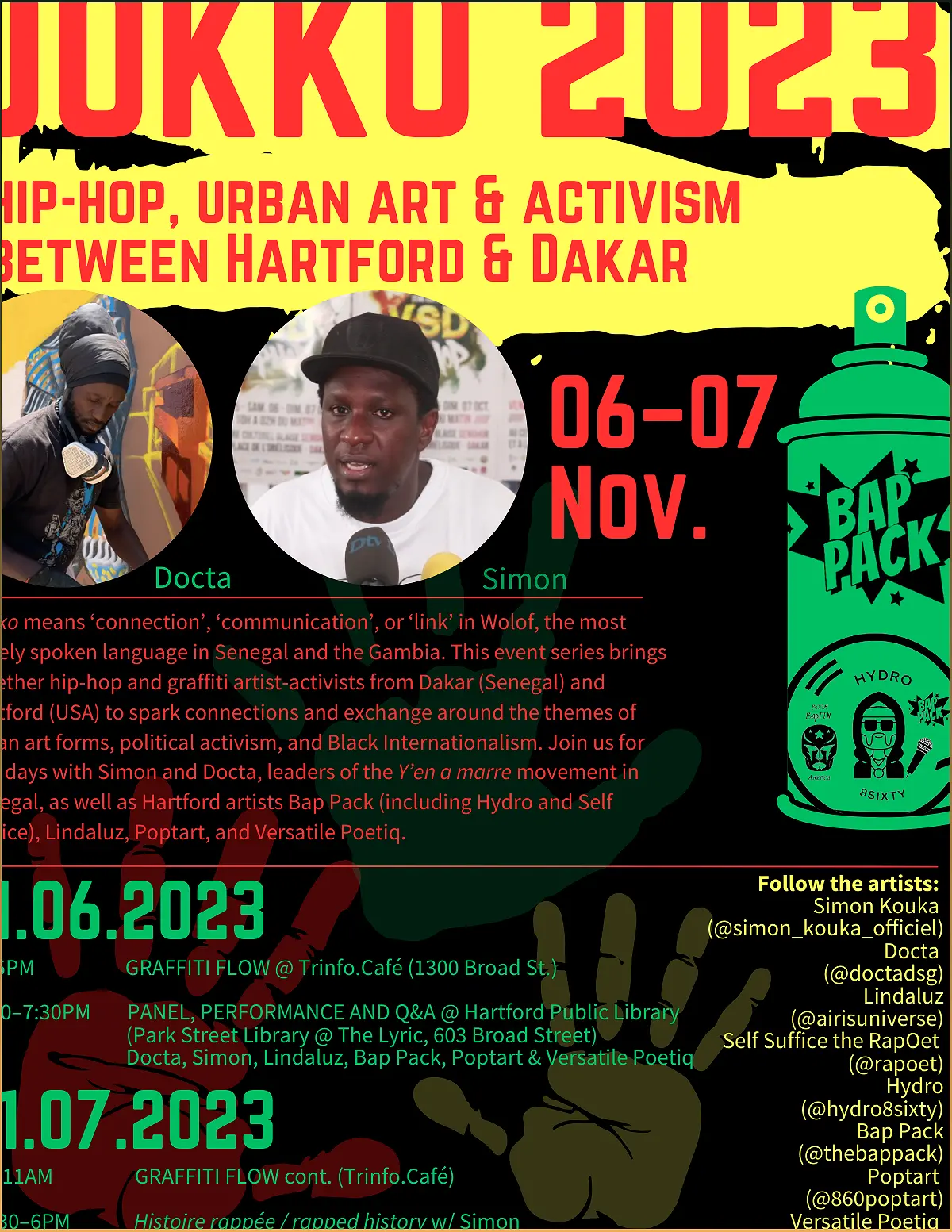During the first week of November, Trinity College brought together graffiti artist-activists from Dakar, Senegal and Hartford for a unique and inspiring collaboration. This event, part of Hip-Hop History Month, aimed to foster connections and exchange ideas around urban art forms, political activism, and Black Internationalism. Let's delve into the vibrant world of street art and explore the powerful impact it can have on communities.
The Power of Collaboration
Explore the impact of collaboration between graffiti artist-activists from Dakar and Hartford
Collaboration is a powerful force that can transcend boundaries and create something truly remarkable. When graffiti artist-activists from Dakar and Hartford came together, their creative energy sparked a vibrant exchange of ideas and perspectives. This collaboration not only produced stunning artwork but also fostered a sense of unity and connection among artists and communities.
By joining forces, these artists were able to amplify their voices and shed light on important social and political issues. Through their art, they conveyed powerful messages of activism, resilience, and cultural pride. The collaboration served as a platform for dialogue and engagement, encouraging viewers to reflect on the shared experiences of communities across the globe.
The Intersection of Hip-Hop and Graffiti
Discover the deep-rooted connection between hip-hop culture and graffiti art
Graffiti art and hip-hop culture have always shared a symbiotic relationship, with both forms of expression emerging from the streets as a means of reclaiming public spaces and voicing marginalized perspectives. This collaboration in Hartford brought together two art forms that have long been intertwined.
Through their vibrant murals and powerful performances, the artists showcased the rich history and cultural significance of hip-hop and graffiti. They highlighted the role of these art forms in shaping identities, challenging societal norms, and advocating for social change. The collaboration served as a reminder of the power of art to transcend boundaries and bring communities together.
Exploring Urban Art Forms
Delve into the diverse and dynamic world of urban art forms
Urban art forms encompass a wide range of creative expressions, from graffiti and street art to murals and installations. This collaboration provided a unique opportunity to explore the different techniques and styles employed by graffiti artist-activists from Dakar and Hartford.
The artists showcased their mastery of spray paint, stencils, and other tools of the trade, transforming blank walls into vibrant canvases. Their art not only beautified the urban landscape but also conveyed powerful messages and sparked conversations. From intricate lettering to thought-provoking imagery, each artwork told a story and invited viewers to engage with their surroundings in a new and meaningful way.
Political Activism through Art
Uncover the role of graffiti art in political activism
Graffiti art has long been a powerful tool for political activism, allowing artists to express dissent, challenge authority, and advocate for social justice. This collaboration between graffiti artist-activists from Dakar and Hartford continued this tradition, using art as a means of protest and empowerment.
The artists tackled a range of pressing issues, from racial inequality and police brutality to environmental degradation and economic injustice. Their murals and performances served as a visual call to action, urging viewers to critically examine the world around them and take a stand for positive change. Through their art, the artists demonstrated the transformative power of creativity in shaping public discourse and mobilizing communities.
Black Internationalism and Cultural Exchange
Explore the themes of Black Internationalism and cultural exchange in graffiti art
Black Internationalism refers to the global solidarity and interconnectedness among Black communities around the world. This collaboration between graffiti artist-activists from Dakar and Hartford provided a platform for exploring and celebrating this shared identity.
The artists drew inspiration from their respective cultural backgrounds, infusing their artwork with symbols, motifs, and narratives that spoke to the experiences of Black people across continents. Through their collaboration, they emphasized the importance of cultural exchange and the power of art in fostering understanding and unity. The murals and performances served as a testament to the resilience and creativity of Black communities, transcending geographical boundaries and creating a sense of global belonging.
Conclusion
The collaboration between graffiti artist-activists from Dakar, Senegal and Hartford was a powerful testament to the transformative power of art. Through their vibrant murals, performances, and panel discussions, these artists sparked connections, fostered dialogue, and brought attention to important social and political issues.
By exploring urban art forms, highlighting the intersection of hip-hop and graffiti, and advocating for political activism, the artists showcased the potential of art to inspire change and create a sense of unity among communities. The collaboration also emphasized the themes of Black Internationalism and cultural exchange, celebrating the shared experiences and identities of Black people around the world.
This event served as a reminder of the power of collaboration and the ability of art to transcend boundaries. It showcased the creativity, resilience, and activism of graffiti artist-activists, leaving a lasting impact on both the artists and the communities they engaged with.

